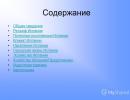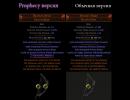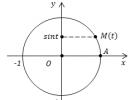What is electron impact ionization? Ionization methods. See what “Electronic strike” is in other dictionaries
A special position among methods of ionization of organic substances is occupied by electron impact ionization. The main advantages of this method are reliability and versatility. In addition, the existing computer libraries of mass spectra from Wiley and NIST use electron impact spectra. Theories of mass spectrometric decay and approaches to the interpretation of spectra are also based mainly on the initial formation of a molecular radical cation as a result of electron ionization.
The name of the ionization method - electron impact - is somewhat misleading. There is no actual impact of electrons on the molecule. An electron flying near a molecule excites its electron shell, as a result of which the molecule’s own electrons move to higher orbitals and can go beyond the action limits nuclear forces. In this regard, recently the term “electron impact” is increasingly being replaced, especially in English-language literature, by the term “electron ionization”.
A beam of electrons is generated by the cathode (a wire or plate of rhenium or tungsten) and accelerated by a potential of 12-70 V towards the anode. Substance in the gas phase at pressure
10 -5 -10 -6 mm Hg. Art. The ionization process can be formally represented by the equation
Schematic diagram
electron shock source:
1- cathode; 2 - anode; 3 – hole
to enter a sample; 4 – ejecting electrode
M + e = M +. + 2e -
As a result, the molecular ion M + is formed. . It is an odd-electron ion, i.e. a radical cation.
Ionization efficiency is generally very low. In fact, no more than 0.01% of molecules are ionized. The probability of ionization for each substance has a characteristic value called the ionization cross section.
An important parameter ionization is the energy of ionizing electrons. In most cases, the number of ionized molecules reaches a maximum at electron energies of about 50 eV. Standard electron impact mass spectra are usually taken using ionizing electrons with an energy of about 70 eV, which is explained by the sufficiently achieved high efficiency ionization and stability of the resulting mass spectrum.
During the ionization process, the molecular ion receives excess internal energy in the range 0-20 eV. This excess energy is evenly distributed over all bonds, and excess energy of any bond leads to its rupture with the detachment of a neutral fragment and the formation of a fragment ion. The minimum energy of ionizing electrons at which a fragment ion will be recorded in the mass spectrum in addition to the molecular one is called the energy of appearance of this ion. The higher the energy of ionizing electrons, the larger number directions of molecular ion decay are realized. Moreover, if the excess energy of the fragment ion remains high, secondary processes of its further decay may occur. Since the differences in the energy of appearance of fragment ions are small, even small changes in the energy of the ionizing electrons can lead to significant changes in the mass spectrum.
Along with singly charged ions, multiply charged ones are also formed during the ionization of molecules. The number of multiply charged ions is significantly less than singly charged ones; it depends, first of all, on the structure of the molecules and on the ionization conditions.
In some cases, when it is necessary to increase the intensity of the MG peak, ionizing electrons with an energy of 12-20 eV are used. Under these conditions, only the relative intensity of the M4 peak* and the peaks of the so-called rearrangement ions increases in relation to the intensity of the peaks of fragment ions, while the absolute intensity all peaks in the spectrum decrease. In addition, in such cases, many directions of fragmentation are not implemented, which leads to the loss of a certain part of the received information. However, it should be remembered that if a molecular ion peak is absent in the mass spectrum obtained at an ionizing electron energy of 70 eV, it will not be present at a lower electron energy. In this case, it can be argued that the molecular ion of this compound is unstable. It should be emphasized that a significant number of organic compounds are characterized by unstable ions under electron impact conditions, which is a significant drawback this method ionization.
Since the pressure in the ion source of electron impact is 10-KG3 mm Hg. Art., and the sample can be heated to several hundred degrees, many organic compounds pass into the gas phase. However, for the analysis of thermolabile, non-volatile and high molecular weight compounds The electron impact ionization method is not suitable. In addition, in mass spectra obtained using electron impact ionization, the molecular ion peak has low intensity or is absent altogether. The wide spread of ionizing electron energies does not allow one to determine with sufficient accuracy the characteristics of molecules and ions (energy of appearance and ionization). These are the main disadvantages of the electron impact method, work to eliminate which has led to the creation of a number of alternative ionization methods.
In order to knock out one electron from a molecule (atom), it is necessary to expend a certain amount of energy. The minimum value of such energy is called the ionization energy of a molecule (atom), its value for atoms is various substances lie within 425 eV.
Simultaneously with the process of gas ionization, the reverse process always occurs - the process of recombination: positive and negative ions and molecules. The more ions appear under the influence of the ionizer, the more intense the recombination process. As a result of recombination, the conductivity of the gas disappears or returns to its original value.
As mentioned above, the removal of an electron from an atom (ionization of an atom) requires the expenditure of a certain amount of energy. When a positive ion and electron recombine, this energy, on the contrary, is released. Most often it is emitted in the form of light, and therefore the recombination of ions is accompanied by a glow (recombination glow). If the concentration of positive and negative ions is large, then the number of recombination events occurring every second will also be large, and the recombination glow can be large, and the recombination glow can be very strong.
Ionization under the influence of an external ionizer is taken into account only in the case of relatively weak electric fields, when the kinetic energy eEL accumulated by an electron (or ion) over the mean free path L is less than the ionization energy Ei
and, therefore, when colliding with neutral particles, electrons only change the direction of motion (elastic scattering).
In addition to this ionization, ionization by electron impacts is possible.
3.2 Ionization by electron impacts.
This process consists in the fact that a free moving electron with sufficient kinetic energy upon collision with a neutral atom, it knocks out one (or more) of the atomic electrons. As a result of this, the neutral atom turns into a positive ion (which can also ionize the gas) and, in addition to the primary one, new electrons appear that ionize more atoms. Thus, the number of electrons will increase like an avalanche, this process is called an electron avalanche. This type of ionization is observed in strong fields, when
To quantitatively characterize the ionizing ability of electrons and ions, Townsend (1868 – 1957) introduced two “volume ionization coefficients” and . is defined as the average number of ions of the same sign produced by an electron per unit length of its path. The coefficient characterizing the ionizing ability of positive ions has the same meaning. The ionization coefficient by electrons is significantly higher than the ionization coefficient by positive ions.
The following classic Townsend experiment proves this statement.
Experience: An ionization chamber is taken in the form of a cylindrical capacitor, the internal electrode of which is a thin metal thread (Fig. 1). Between the filament and the outer cylinder of the capacitor, a potential difference V is pretended to be sufficient to ensure that impact ionization gas The latter will practically occur only near the thread, where the electric field is very strong. Let us assume that a positive potential is applied to the thread. Then electrons will rush to the filament and ionize the gas near it. Positive ions, rushing towards the outer cylinder, will pass through the weak field region and cause practically no ionization. Let us now change the polarity of the voltage V without changing its value. Then the roles of positive and negative ions will change places. Positive ions will rush towards the filament, and ionization in the chamber will be excited almost exclusively by them. Experience shows that in the first case the ionization current is larger and grows faster with voltage V than in the second (Fig. 2, curve I refers to the case when the internal electrode is positive, and curve II to the case when it is negative).
Thus, main role ionization by electron impacts plays a role, in comparison with which ionization by positive ions can be neglected in many cases.
3.3 Independent and non-independent discharge.
Before moving on to consideration of Townsend’s theory, we will give the concept of independent and non-independent discharge.
A discharge that exists only under the action of an external ionizer is called non-self-discharge.
If the ions necessary to maintain the electrical conductivity of the gas are created by the discharge itself (as a result of processes occurring in the discharge), such a gas discharge is called independent.
Townsend theory of passage electric current through gas.
It takes into account the impact ionization of gas atoms and molecules by electrons and positive ions. For simplicity, we will consider the electrodes of the discharge tube to be flat. We will neglect the recombination of ions and electrons, assuming that during the passage between the cathode and the anode these particles do not have time to recombine. In addition, we will limit ourselves to the stationary regime, when all quantities characterizing the discharge do not depend on time. Let us place the origin of coordinates on the surface of the cathode K, directing the X axis towards the anode A. Let ne(x) and np(x) be the concentrations of electrons and positive ions, and ve and vp their average drift velocities. Let us take an infinitely thin flat layer in a gas. Through this area on the left, ne(x) vp(x) electrons enter the layer every second, and ne(x+dx) ve(x+dx) exit from the right. In the volume of the dx layer, due to ionization by electrons, ne vedx electrons and the same number of positive ions appear every second. Similarly, due to ionization by positive ions, npvpdx electrons and the same number of positive ions are formed. Finally, there may be an external source of ionization that creates q pairs of ions per unit volume of gas every second. And since in the case of a stationary process the number of electrons in the layer does not change, the relation must be satisfied
ne(x)ve(x)-ne(x+dx)ve(x+dx) + (neve + npvp)dx +qdx=0
Similarly, for positive ions moving from the anode to the cathode,
np(x+dx)vp(x+dx) – np(x)vp(x) + (neve + npvp)dx +qdx=0
Replacing the differences with the corresponding differentials and reducing by dx, we get
Electron ionization
Electron ionization(EI, electron impact ionization, EI - Electron Ionization or Electron Impact) is the most common method of ionization of substances in the gas phase in mass spectrometry.
During electron ionization, the molecules of the analyte enter the flow of electrons moving from the emitting cathode to the anode. The energy of moving electrons is usually 70 eV, which, according to de Broglie's formula, corresponds to the length of a standard chemical bond V organic molecules(about 0.14 nm). Electrons cause ionization of the analyzed molecules with the formation of radical cations:
M + e − = M .+ + 2e −
Electronic ionization occurs in a vacuum (compared to chemical ionization) to prevent the massive formation of atmospheric gas ions that can recombine with and destroy the analyte ions.
Since the electron energy significantly exceeds the chemical bond energy, ion fragmentation occurs. The chemistry of ion fragmentation during electron fragmentation has been well studied, therefore, knowing the masses of fragments and their intensities, it is possible to predict the initial structure of the substance. Mass spectra obtained using the electron ionization method are highly reproducible, so today there are libraries containing hundreds of thousands of spectra of various substances, which greatly facilitate qualitative analysis.
Some substances undergo very intense fragmentation, producing only low-molecular-weight fragments that make identification difficult. For the analysis of such substances, there is an alternative method of chemical ionization
| Mass spectrometry Mass Mass spectrum MS software |
|
|---|---|
| EI CI IA ( English) BBA DvEP MALDI APCI ESI DESI GD ICP MIP TS DART | |
| Mass analyzer | Magnetic sector IP Quadrupole Quadrupole ion trap Orbitrap Tandem ICR |
| Detector | Electron multiplier Microchannel plate detector Daly detector |
| MS combination | MS/MS GC/MS LC/MS IMS/MS |
Wikimedia Foundation. 2010.
See what “Electronic ionization” is in other dictionaries:
E. theory is a very bold attempt to consider an atom of any substance as an aggregate of the same number of atoms of positive and negative electricity, the so-called positive and negative electrons, forming... ... Encyclopedic Dictionary F. Brockhaus and I.A. Efron
A device for producing flows (beams) of electrons in a volume from which air has been removed (in a vacuum). Electrons in the electron beam fly out of the cathode and are accelerated electric field(Fig. 1). The emission of electrons from the cathode occurs mainly... ...
The term Auger electron spectroscopy Term in English Auger electron spectroscopy Synonyms Auger spectroscopy Abbreviations EOS, AES Related terms ultraviolet photoelectron spectroscopy, x-ray photoelectron spectroscopy... ...
Ionization in the upper atmosphere caused by the intrusion of meteoric matter into it (See Meteoric matter). Active M. and. occurs mainly during collisions of evaporated and dispersed meteoric atoms with air molecules. Average... ... Great Soviet Encyclopedia
See Art. (see MULTI-PHOTON PROCESSES). Physical encyclopedic dictionary. M.: Soviet encyclopedia. Editor-in-Chief A. M. Prokhorov. 1983. MULTI-PHOTON IONIZATION ... Physical encyclopedia
The steadily increasing process of electron multiplication as a result of the ionization of atoms and molecules, usually by electron impact; is the most important element of electricity. gas breakdown. In most cases, L. e. develops into electricity. or email mag... Physical encyclopedia
- (see IONIZATION). Physical encyclopedic dictionary. M.: Soviet Encyclopedia. Editor-in-chief A. M. Prokhorov. 1983. STEP IONIZATION ... Physical encyclopedia
The term molecular electron spectroscopy The term in English molecular electron spectroscopy Synonyms UV spectroscopy, UV spectroscopy Abbreviations Related terms electron vibrational spectroscopy Definition method of determination... ... Encyclopedic Dictionary of Nanotechnology
Electron ionization (EI, electron impact ionization, EI Electron Ionization or Electron Impact) is the most common method of ionization of substances in the gas phase in mass spectrometry. In the electron ionization of the analyzed molecule... ... Wikipedia
- (mass spectroscopy, mass spectrography, mass spectral analysis, mass spectrometric analysis) a method for studying a substance by determining the ratio ... Wikipedia
The most widely used ionization method in modern mass spectrometry is electron impact (Fig. 1.1). In order to ionize a substance, it is first necessary to transfer it from the condensed phase (liquid, solid) to the gas phase, for example, to heat it. The gaseous substance must then be introduced into an ion source, where it is bombarded by a beam of electrons from the cathode. You can place a substance in the condensed phase into an ion source and evaporate it there.
Rice. 1.1. Electron impact ionization
Electrons, which are light, negatively charged particles compared to molecules, collide with molecules, tear electrons out of their electron shells and transform the molecules into ions. In this case, the molecules disintegrate into charged fragments according to a mechanism specific to each compound.
It is this process that will ultimately produce the mass spectrum.
Another method of ionization is ionization in ion-molecular reactions, called chemical ionization. With this method, the ion source is filled with some kind of gas at elevated pressure (typically methane or isobutane is used, rarely ammonia and other gases). This gas is ionized by electron impact, and as a result of the large population of molecules in the source, ion-molecular reactions begin to occur, leading to the formation of reagent ions, which in turn interact with the molecules of the substance, leading to their ionization.
In this case, protonation occurs, i.e. formation of positively charged ions. Compounds introduced into the ion source can also react with slow (thermal) electrons that are formed in the plasma of the source operating in the chemical ionization mode. During this interaction, dissociative resonant capture of electrons occurs, leading to the formation of an ion with an extra electron, i.e. negatively charged.
This method provides less information about how the structure of the molecule works, but it makes it easier to determine it molecular weight. This applies mainly to positively charged ions.
For a number of applications, the PPNICI (Pulsed Alternating Detection of Positive Ion and Negative Ion Chemical Ionization) method can be very convenient. In this method, from one sample survey, two chromatograms are obtained (and, accordingly, two sets of mass spectra): one for positively charged ions, the other for negatively charged ions. Tandem mass spectrometry (or multistage or multidimensional) is very useful in order to use informationally significant ions formed during chemical ionization and subject it to additional fragmentation, which makes it possible to reveal the structures of molecular fragments.
Unfortunately, many organic substances cannot be evaporated without decomposition, that is, transferred into the gas phase. This means that they cannot be ionized by electron impact. But among such substances, almost everything that makes up living tissue (proteins, DNA, etc.) is physiologically active substances, polymers. For their ionization, mainly ionization methods are used at atmospheric pressure - electrospray ionization (ESI) (Fig. 1.2) or chemical ionization at atmospheric pressure - APCI (and its subtype with additional photoionization - APPI), as well as laser desorption ionization with the assistance of a matrix or matrix-assisted laser desorption/ionization (MALDI, Matrix Assisted Laser Desorption/Ionization).

Fig.1.2. Ionization in electrospray
In the first case, the liquid (the test substance diluted in a solvent) bursts out under pressure along with a coaxially supplied heated gas (nitrogen) from a narrow capillary (a needle that is under an increased potential - 5 - 10 kV) at high speed and directly in this jet of fine mist Electrons are stripped from the shells of molecules, turning them into ions. During the movement of this jet, most of the solvent passes into the gas phase and does not enter the opening of the inlet cone of the API ion source.
In the chemical ionization mode at atmospheric pressure, the potential is applied not to the needle through which the liquid enters, but to the electrode in the spray area, which leads to the formation of a corona discharge. In this case, fragmentation is significantly less than in the previous one - electrospray (ESI).
In the MALDI method, a laser beam removes ions from the surface of a target onto which a sample with a specially selected matrix is applied.

Rice. 1.3.Ionization by laser desorption
These methods are used to ionize the relatively soft compounds that make up organic matter. Soft means that in order to convert organic molecules into ions, relatively little energy is needed. For ionization of inorganic materials (metals, alloys, rocks etc.) requires the use of other methods. The binding energy of atoms in a solid is much greater, so it is necessary to use much more stringent methods in order to break these bonds and obtain ions. Many ionization methods have been tested, and to date only a few of them are used in analytical mass spectral practice.
The first method, the most common, is inductively coupled plasma ionization. Inductively coupled plasma (ICP) is produced inside a torch that typically burns argon. When atoms and molecules enter the plasma of an argon torch, they instantly turn into ions. To introduce atoms and molecules of the material of interest into the plasma, they are usually dissolved in water and dispersed into the plasma as a fine suspension. Another method is to turn the substance into a gas. For example, this is done using a powerful laser beam, which explodes a crater in a sample of material placed under it, transforming a small part of it into a gaseous state (laser ablation).
Another method is thermal ionization or surface ionization. The analyzed substance is applied to a wire made of refractory metal, through which a current is passed, heating it to a high temperature. Due to the high temperature, the applied substance evaporates and ionizes. This method is commonly used in isotope mass spectrometry.
Two other methods can be used to ionize conductive materials. These are spark ionization and glow discharge ionization. In the first, due to the potential difference between the sample of the material under study and another electrode, a spark breaks out, tearing ions from the surface of the target, and in the second, the same thing happens, but due to a glow discharge.
It should be noted that from the ion source to the detector, the mass spectrometer is a vacuum device. A fairly deep vacuum ensures the unimpeded movement of ions inside the mass spectrometer, and in its absence, the ions will simply scatter and recombine (turn back into uncharged particles).
Electron impact (EI) ionization is most commonly used in modern mass spectrometers. This section will discuss the design of the ion source and the main parameters that determine the nature of the mass spectrum.
The schematic diagram of the EI ion source is shown in Fig. 2.1. Bombarding electrons are formed as a result of thermal emission from a cathode (filament) heated to a high temperature, made of rhenium or tungsten wire. Electrons are accelerated by potential difference ( V) between the cathode ( 1 ) and anode ( 2 ) and fall into the ionization region. Permanent magnet ( 4 ) collimates the electron beam and limits it in a narrow spiral trajectory, which increases the probability of interaction of electrons with molecules of the substance under study (M0), which comes from the injection system in a vapor state. The partial pressure of a substance in the gaseous state is 10 -5 -10 -6 torr.
The ions formed in the ion source are formed into a narrow beam using an ion-optical system and are pushed out of the ionization region by a special potential (not shown in Fig. 2.1), accelerated using high voltage, which is usually more than 2000 V, and fall into the action zone mass analyzer.
Under the influence of ionizing electrons, the molecules of the substance under study can undergo the following transformations:
The probability of a particular process occurring is determined primarily by the energy of ionizing electrons, which is expressed in electron volts (eV) and is equal to the product of the electron charge ( h) by the potential difference (V) between the cathode and anode.
If the energy of ionizing electrons is equal to the ionization energy of the molecule, which for most organic compounds lies in the range of 7-12 eV, ionization occurs. The probability of this process occurring increases with increasing electron energy. Simultaneously with ionization, fragmentation of molecular ions begins to occur. Dependence of the yield of molecular ions (the magnitude of the ion current) on the energy of ionizing electrons produced by ionization efficiency curve, shown in Fig. 2.2. A similar curve for the fragment ion is also shown here. Naturally, this curve begins at higher energies of ionizing electrons, since the energy of appearance of fragment ions is always higher than the energy

ionization. Ionization efficiency curves have sections of steep rise in ion current (usually up to an energy of 30-40 eV), followed by a saturation region, where the value of the ion current practically does not change with increasing energy of ionizing electrons.

In most cases, mass spectra are obtained at an energy of 70 eV, i.e. in the saturation region. This ensures the highest sensitivity of the device and obtains reproducible results. Work at energies up to 30-40 eV, i.e. in areas of steep ascent, does not give reproducible results, since a small change in the energy of ionizing electrons leads to noticeable fluctuations in the intensity of the ion current. However, in some cases, mass spectra obtained at low electron energies (low-voltage mass spectra) are used for analytical purposes, for example, to identify a molecular ion at a low intensity of its peak in a high-voltage mass spectrum. In low-voltage mass spectra, due to a sharp decrease in fragmentation, the proportion of molecular ions in the total ion current increases. To illustrate the above, in Fig. Figure 2.3 shows the mass spectra of benzoic acid obtained at different energies of ionizing electrons. This example demonstrates that reducing the electron energy makes it possible to identify a molecular ion, especially when the intensity of its peak in the mass spectrum is low.
Under EI conditions, as a result of the capture of an electron by a molecule, the formation of negative ions is possible. The interaction of an electron with a molecule can be accompanied by its heterolytic splitting to form an ion pair. At low electron energies, close to thermal, resonant electron capture usually occurs. This process can be non-dissociative:
АBC + з > АBC ¬ ?
and dissociative:
ABC ¬ ? > [AB] ? +C.


Important characteristics of an ion source for EI are cathode current(current that flows along the cathode strip), emission current(electron current between cathode and anode) and temperature of the ion source. By changing the emission current, you can vary the sensitivity of the device. High temperature(~200-250°C) is necessary to transfer the sample molecules into a gaseous state, removing the bulk of the test substance from the ion source, which prevents its deposition on the source elements. Ion source contamination organic matter It is especially dangerous for insulating materials (porcelain, glass, quartz), which, as a result of contamination, acquire significant conductivity and greatly change the supplied electrostatic potentials. This can lead to a dangerous breakdown between the electrodes.
Thus, using EI it is possible to analyze only sufficiently volatile compounds that can be converted into a gaseous state, or create the necessary partial vapor pressure in the ion source (~10 -15 -10 -16 Torr). Thermally unstable compounds cannot be studied by EI. These compounds must first be converted into their stable derivatives.






